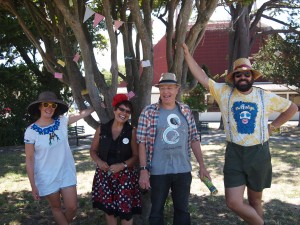Re-weaving community: Across the generations, everyone contributing to a good life
The heart of Wesley Rātā Village is its incredible community – the residents, Village Guiding Group, Te Āti Awa, Hutt City Council, and the many supportive locals and businesses. More than just a place; it’s a living, breathing intergenerational community, where connections are nurtured and well-being is most important. Watch this inspiring video celebrating community innovation, of doing things together in a new way!
Predator Free Wellington: Taking a collective leadership approach to build a social movement.
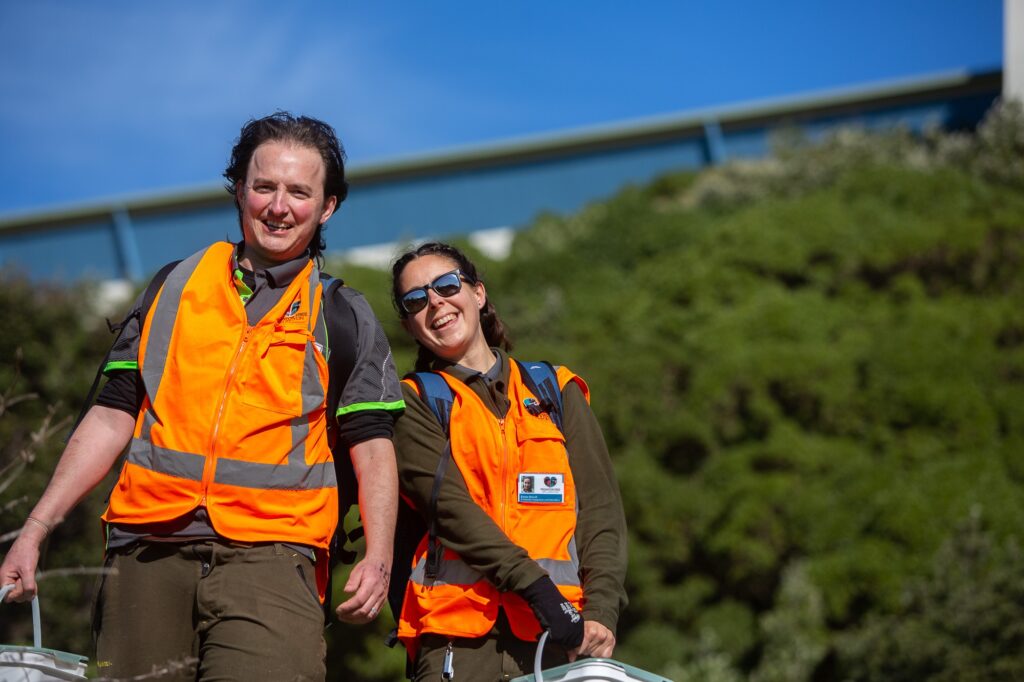
From the get-go, this initiative has been driven by the understanding that the vision of a predator free Aotearoa needs to be strongly rooted in, and driven by local communities. The ever-growing map of participating Predator Free groups, big and small, across the country is testament to the strength and diversity of the Predator Free movement.
James Willcocks, Predator Free Wellington
“People are our biggest challenge in conservation, but they are also our biggest chance. Because if we can have 212,000 pairs of eyes and ears on the case, that’s all the people living in Wellington, that’s the most effective protection network you could ever have. That has been a massive learning for us.”
Across Aotearoa, communities are taking action to enable the aspirational goal of Predator Free 2050. The aim is to completely eliminate the predators most dangerous to our unique biodiversity (rats, stoats, and possums have been identified to be the most damaging of introduced predators). Collaborative efforts are underway at national, regional and local levels to make change happen.
Building on shared local visions
“Taiao – environment at particular places” is one of seven key principles in the national strategy which is enabling ‘bottom up’ innovation and tailored responses. Predator Free Wellington is one of many initiatives underway, their goal to make Wellington the first predator-free capital in the world. They’re moving along at high pace and have nearly completed the first phase of their plan, namely eradicating pests on, and returning native birds to, the Miramar Peninsula. To achieve this, Project Director James Willcocks and his team have built a tight network across the resident community, getting everyone involved in setting up bait stations and traps across the Peninsula.
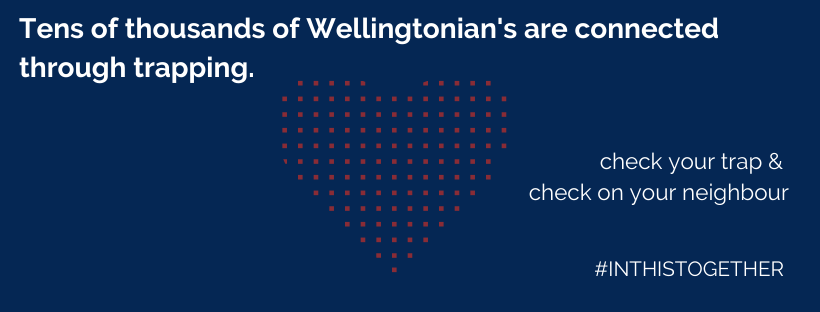
“We designed this project from the bottom up with the community at the centre. Our vision is for both our communities and our native biodiversity to thrive. You cannot have one without the other.”
Read more
Collaborative Local Leadership
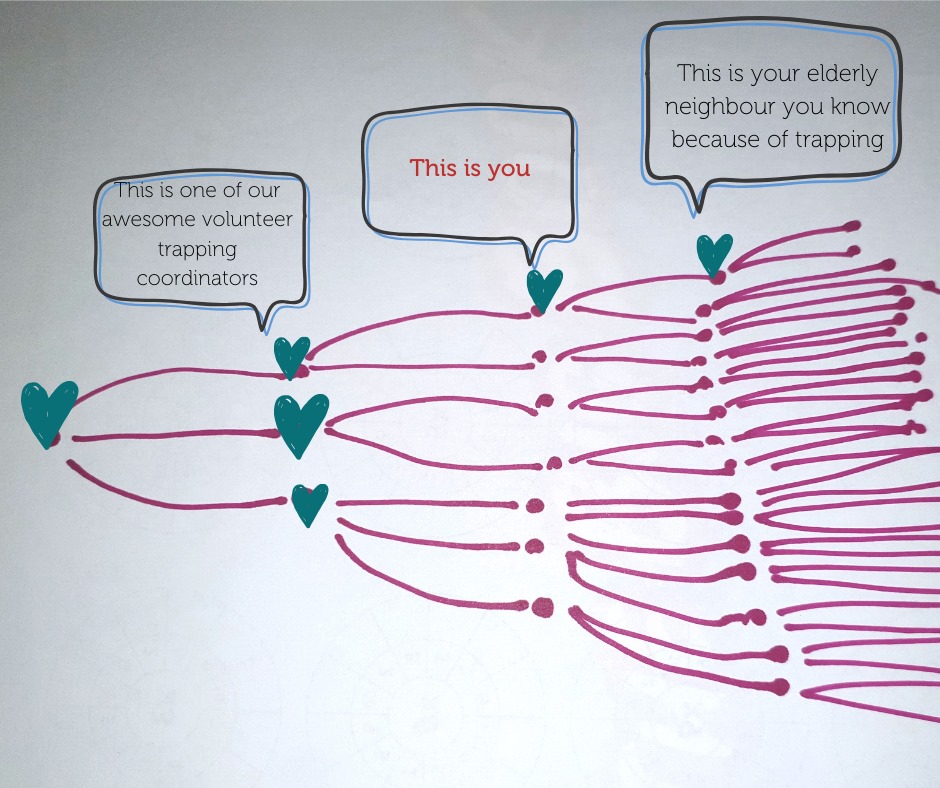
“We really want to create a sense of team and connection for the people. And it’s really worked, neighbours are talking to neighbours about this project, and it’s really driving this huge sense of commitment for the people of Miramar.”
James adds that his team has been absolutely blown away by how engaged the community has been in the project, proving that collective local leadership and the relationships behind it, are the key to success.
“We wanted to kick off a massive social movement. It is not about ‘doing to’ people in that sense – community leaders have stepped up and reached out because they want to do this, and we have then provided them with the expertise, resources and equipment – we’ve given them traps – and they have taken these back into their communities.”
To eradicate the pests, traps and bait stations have to be set up every 50 metres across the grid cast over the area. On Miramar, that is a minimum of 8,000 devices in an area where 20,000 people live:
“Our Engagement Field Officers have gone to knock on every door to talk to people about the project and by doing that, we have received 99% permission to set up traps on private land. This takes a great deal of trust – we cannot take this lightly: you really become part of peoples’ lives when you are visiting them every week. It’s huge social interaction and a huge opportunity for real social outcomes in this space.”
Diversity and inclusivity enable social outcomes
The ability and willingness to look beyond a traditional, westernised conservation model is a key factor in enabling participatory, community-led action. James stresses how much he has learned by working so closely with the diverse neighbourhoods in Wellington:
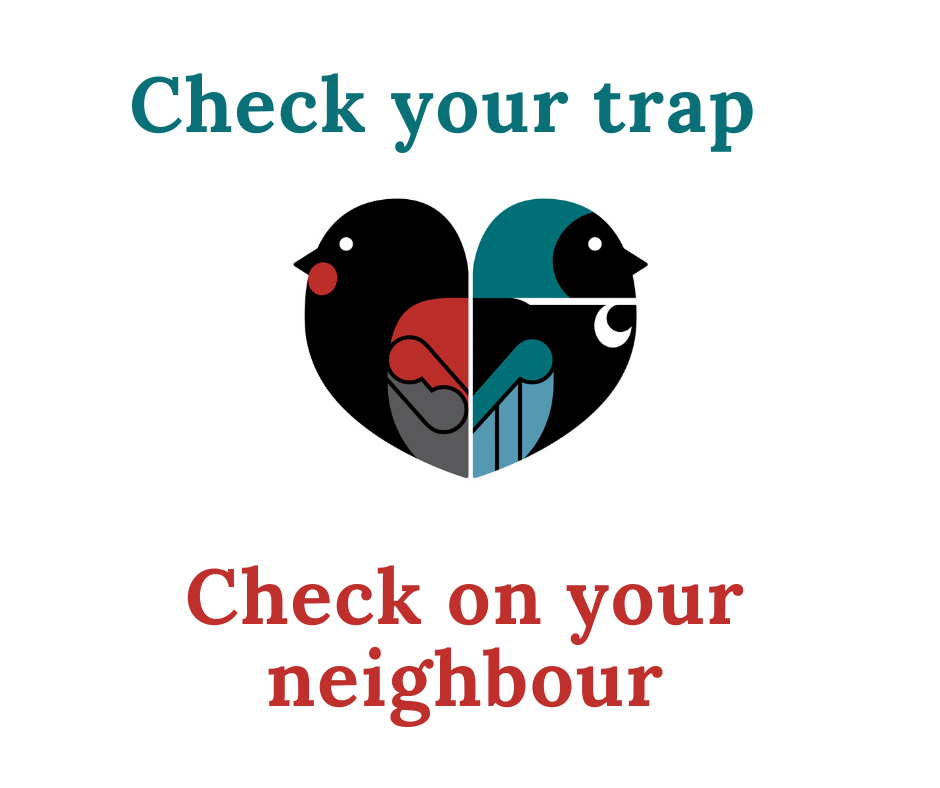
“Another massive learning for us has been working with marginalised communities or communities that can find themselves isolated, and not going in with a westernised, scientific approach. It is crucial to listen to different communities’ needs and perspectives to really get their buy-in to the project. We all care about the same thing but we will get there in different ways.”
James recalls an inspiring success story with “this fantastic guy who had spent a bit of time on the wrong side of the train tracks” some years ago. This person got involved in the cause because his family could not sleep as they had rats in their hot water cabinet. Having great success with their traps, this family then went on to play an instrumental role in linking James’ team with other neighbours and parts of Miramar who would likely not have felt included in a standardised, top-down approach.
Local action as part of the national vision
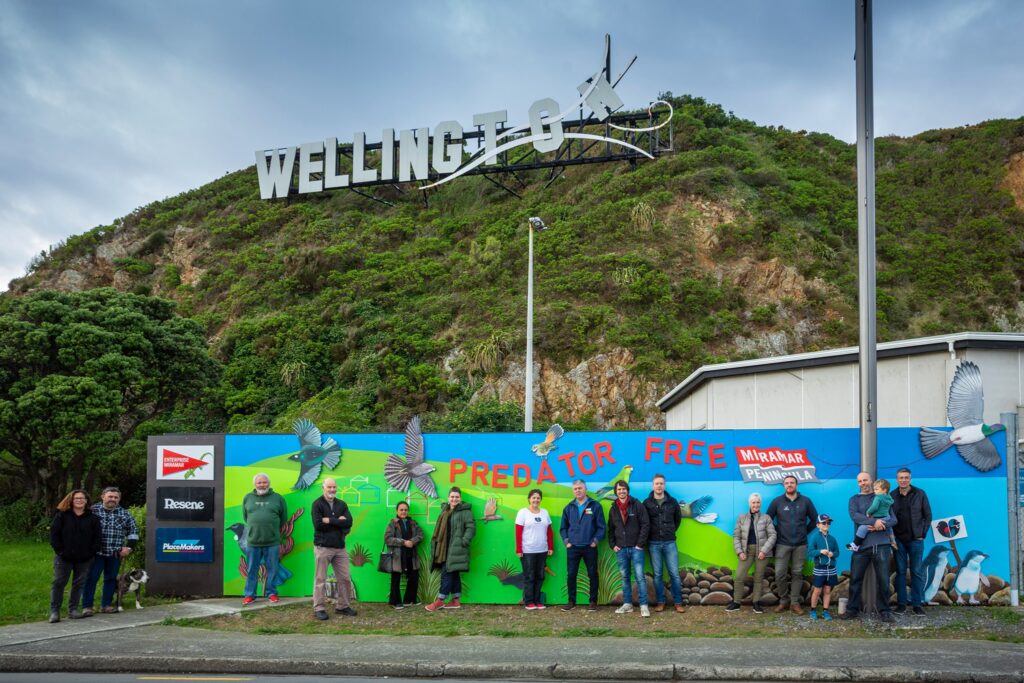
“Making Wellington predator free, that’s not my story to tell. It’s the story of the city of Wellington and its people.”
For a successful movement, James agrees that it’s all about thinking outside the box and to go ahead with holistic and broad approaches with the community at the lead, in order to find a way of working together that enables everyone involved. Having a clear goal in mind, and one that is close to home, also supports connection:
“Predator eradication is one part of the rich tapestry of conservation. Setting up a trap is a simple, straightforward action that people can take, and it links them to the broader global goal of preserving and conservation. Tackling big topics like Climate Change can seem impossible for the individual, but if the community can work together and focus on a tangible outcome through direct action, everyone can contribute. We are all part of nature, and everyone has something to contribute.”
Saving more than the birds
By K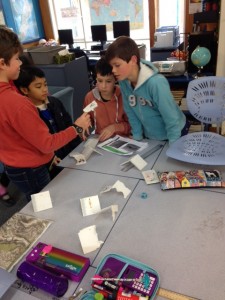 elvin Hastie – Crofton Downs Predator FreeI’m a guy who was out the front gate of his house and saw a stoat cross the road in front of him and decided to start Crofton Downs Predator Free Community as a means to alleviate my inner guilt and rage.
elvin Hastie – Crofton Downs Predator FreeI’m a guy who was out the front gate of his house and saw a stoat cross the road in front of him and decided to start Crofton Downs Predator Free Community as a means to alleviate my inner guilt and rage.
We decided to engage our place to become New Zealand’s first predator free community. Free of rats, stoats, weasels and possums. No one had ever tried this in a built up residential area, so we bonded the community together in a common goal.
We tend to think of these things as the birds and the reserves but we flipped that on its head and said let’s look at the community and ignore the birds.
We didn’t ask the experts how this could be done because we wanted to rewrite the rules without knowing what the rules were. We wanted to understand what the true barriers were and whey we were still going backwards in New Zealand when it comes to our environment.
I was keen to figure out what was most important: the outcome of trapping is more birds, lizards, invertebrates…..obvious right? Well no not really. We gave 500 hundred people a sense of PLACE and ownership in our small community.
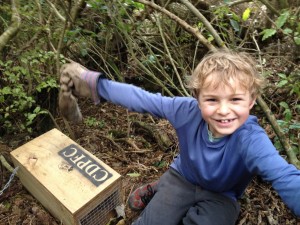 • We created community building and partnerships
• We created community building and partnerships
• A sense of purpose
• Exercise and wellbeing
• Connection to the environment
We gave our community ownership and they wrote the script.
We didn’t focus on an outcome, because often people want to jump straight to fixing what they perceive as the problem. In our case that would have been to jump straight into saving the birds by killing the predators, which is fun, but simplistic. The true outcome – which could be resolving a bigger problem is not always evident upfront, and that takes time to emerge.
On the 1st of November 2015 Crofton Downs was crowned NZ’s first Predator Free Community; free of rats, stoats, weasels and possums after monitoring zero. Some experts say to me this is not a true measure, it takes three years to declare an area predator free. So while this debate goes on – rather than wait three years to be declared predator free – we have widened the programme. It’s pretty hard to be predator free when your neighbours aren’t. We have expanded to four neighbouring suburbs that will now encompass 900 hectares under residential control. And another 1,500 hectares under best practice linked reserve control with 1,000 DOC200’s (traps) from outside the Zealandia Café to Mt Kaukau in the North and our birds are flourishing.
We have also partnered with other organisations like Zero Invasive Predators (ZIP) who are on the cutting edge of predator control in this country.
Wha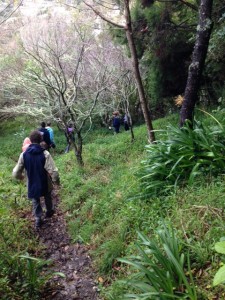 t happens when the predators are gone? Our community is finding new and wonderful ways to fill the gaps. People are becoming more responsible pet owners, people are watching over our Kaka fledglings as they drop on the ground, more planting is taking place and we are building new tracks and lining them with traps.
t happens when the predators are gone? Our community is finding new and wonderful ways to fill the gaps. People are becoming more responsible pet owners, people are watching over our Kaka fledglings as they drop on the ground, more planting is taking place and we are building new tracks and lining them with traps.
People are moving further into the landscape- walking, running, biking further, widening their aspirations and linking with our neighbouring communities to find out what else we can achieve.
If we adopt this way of working in communities I believe we will see:
• durability
• resilience
• woven aspiration and
• enduring regard
So while the battle for the birds continues across the wider landscape, we can all do our bit and every little bit no matter how small makes a big difference, it is no less important than the big bits.
‘No Place Like Home’ Treasure Hunt
By Sue Jenkins
On Saturday 13th February Newtown was home to a very special kind of Treasure Hunt, revealing, to residents and visitors alike, some hidden treasures lying at the heart of the community.
A beautiful, sunny, Wellington afternoon and children and adults assembled at the Newtown Community and Cultural Centre to register for the event; picking up a map with essential clues and preparing for a fun day out! Many of the participants had risen to the challenge of donning fancy dress costume for the occasion.
Along the route there were many ‘have-a-go activities’ such as: energetic hula-hooping at the Wellington Circus Trust, learning a new dance move at the NZ School of Dance, and the slightly more sedate, but very creative, art-workshop pasta-style at Cicio Cacio Osteria. Some particularly talented youngsters were observed giving it their best shot and certainly enjoying themselves into the bargain.
The Treasure Hunt introduced participants to some of Newtown’s older historical sites such as the older Fever Hospital now the how to the SPCA. They were introduced to the world behind the rising stars of Toi Whakaari and New Zealand School of Dance and tickled their taste buds with a new cold nitro brew at the People’s Coffee Roastery. Whether it was a visit to the Carrara Park Community Gardens or a sneak peek at Te Kaahui Kohanga Reo, there was certainly something for everyone.
And a lovely idea at St Anne’s Place of Peace, where the wishing tree could be found. Here, everyone was invited to write down their wish and hang it on the wishing tree. From the very understandable wish for ‘a special pet’ to an extremely poignant wish for ‘the bullies to stop,’ everybody had a chance to express their heartfelt wishes in that lovely, quiet spot.
The afternoon was rounded off with a free BBQ at Newtown Workingman’s Bowling club and a live performance by Sendam Rawkustra.
The aim of the treasure hunt was to create a sense of adventure in people’s backyard. As people journeyed through the different activity stations they would continue to bump into each other and share their stories and experiences. The BBQ afterwards provided a space where these informal relationships could be continued still within the space of the event. Hopefully a longer term impact will be that they will share a smile or a hello next time they pass each other in the street.
Everyone learnt something new about ‘this place called home,’ during a very well organised and adventurous afternoon. A well-deserved vote of thanks goes to the many people volunteering their time to ensure that the event ran smoothly and maintained a high level of safety. Radiant smiles on the faces of the people positioned at each of the stations along the route and encouraging comments from those assisting with road-crossing helped the participants! A newcomer to Newtown, I certainly enjoyed the tremendous sense of community.
This event wouldn’t have been possible without the Sponsors, including Newtown New World and Commonsense Organics, WCC & Thank you Charitable Trust.
To find out more about how to organise a community treasure hunt – go to http://site.ouramazingplace.org.nz
Inaugural Boost Camp a Huge Success!
“My biggest learning was looking for strengths in others, and how these can be knitted together so that everyone is free to grow.” – Boost Camp participant
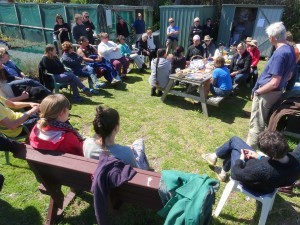 Working on leadership skills and the mix of listening and hands on learning are just some of the positive outcomes participants at our very first Boost Camp pinpointed after spending two days at Tatum Park, Levin recently.
Working on leadership skills and the mix of listening and hands on learning are just some of the positive outcomes participants at our very first Boost Camp pinpointed after spending two days at Tatum Park, Levin recently.
The idea to run Boost camp was in response to our research last year, Strengthening Neighbourhoods in Aotearoa which identified the need for more training, learning and connecting opportunities. It prompted the Inspiring Communities team to think about how we could creatively package and share what we’ve been learning about working at neighbourhood scale.
Held from Friday evening to mid-Sunday afternoon Boost Camp was all about connecting local leaders and wisdom around what works and enables neighbourhood-led action to thrive.
A diverse mix of 32 neighbourhood people, armed with heaps of passion, came together from lower North Island communities. They brought and traded their knowledge about time banking, community gardening, supporting and connecting local families, creating local hubs, promoting community safety, growing local leaders, sharing local assets, encouraging generosity and transforming local environments.
We learnt from each other and were also inspired by amazing catalyst speakers. Trent Hiles from Gap Filler reminded us what’s possible when you just get on and do things – and then invite people in to use and be part of locally created spaces and places. We also learned from Dave Tims about building and connecting local people and their assets – from the street up – in Randwick Park, Manurewa.
We worked on ourselves, our leadership skills and made plans for what we will do next back in our local communities. And if that wasn’t enough, there was a bonfire, a crazy flying fox and Sunday morning site visit with passionate Waitohu Stream Care Group members at Otaki Beach. Not only was their dune restoration programme impressive, so was their baking!
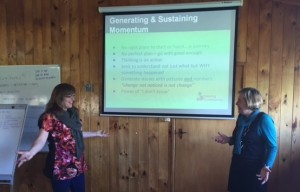 For Boost Camp facilitators, Denise and Megan, it was a great first up learning experience too. “Boost was about creating an ako-ako space where we’re all teachers and learners. Everyone participated 120%. The fact that 92% of attendees gave Boost a 4 or 5 out of 5 (very satisfied) rating shows us we have a valuable learning process that many communities can benefit from”, says Megan.
For Boost Camp facilitators, Denise and Megan, it was a great first up learning experience too. “Boost was about creating an ako-ako space where we’re all teachers and learners. Everyone participated 120%. The fact that 92% of attendees gave Boost a 4 or 5 out of 5 (very satisfied) rating shows us we have a valuable learning process that many communities can benefit from”, says Megan.
Here’s a sample of participants’ comments
- “I loved the mix of listening and hands on learning”
- “The speakers were amazing and provided good examples of who, where and how things are already working around the country.”
- “I loved the opportunity to talk in small groups and having enough free time to network informally.”
- “I’ve learnt more about sharing leadership, giving space for others to lead and grow and appreciate the value of play in providing opportunities for people to come together.”
Denise says Boost Campers also offered some really useful suggestions for making the next one even better. “We want to take these ideas and feedback to further develop the Boost programme and offering. Ideally, we’d love to run four Boost Camps in and with different New Zealand communities in 2016″.
Check out images from the weekend on our facebook page
If you’re interested in learning more about Boost please contact Megan:Megan.Courtney@inspiringcommunities.org.nz
PS: if you’re looking for a fantastic community friendly workshop or conference type venue outside of Wellington, we totally recommend Tatum Park. They have a range of accommodation options, massive grounds and their customer service is top knotch!
Berhampore School – creating an inclusive school & community
Being brave, working collaboratively and giving people opportunities to participate and contribute in many different ways has born amazing results for Berhampore School.
Primary Principal Mark Potter shares key highlights from their community-led journey to “help people no matter what” at “Community is the Answer” Workshop Day held in December 2014 – co-hosted by Inspiring Communities and Inclusive NZ.

